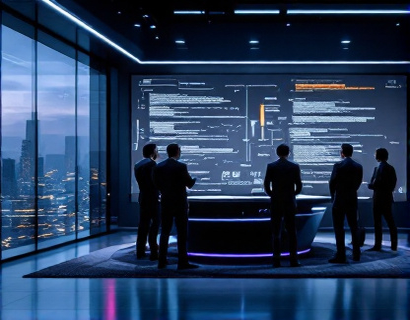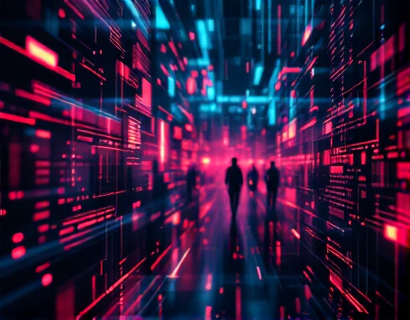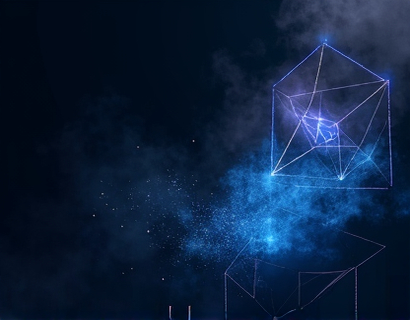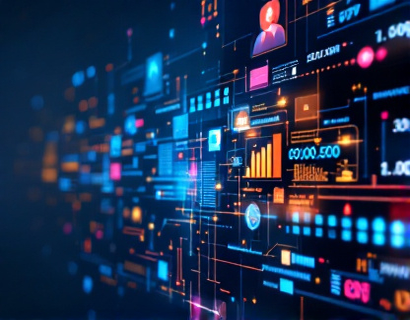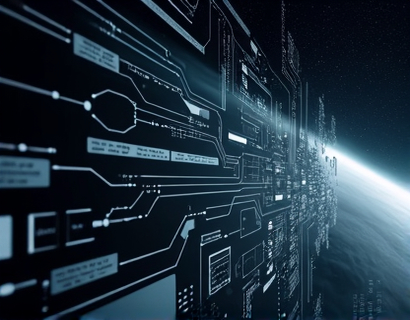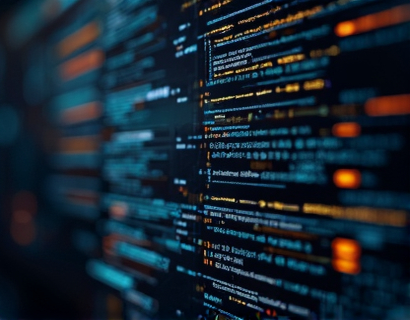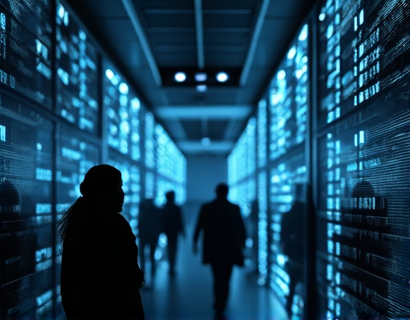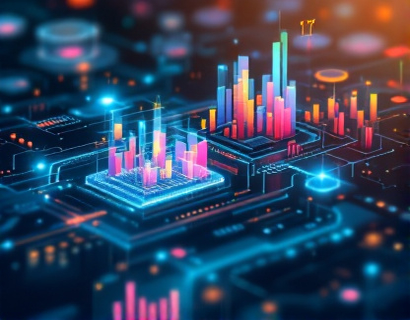Harnessing AI and Crypto: Revolutionizing Ucosystem Applications for the Next Generation
The intersection of artificial intelligence and cryptocurrency is giving birth to a new era of technological advancements, redefining how we interact with digital applications and services. This fusion, often referred to as techfusion, is creating innovative solutions that leverage the strengths of both domains to enhance user experiences and drive efficiency. As we explore this transformative space, it's essential to understand the foundational technologies and their potential applications in various sectors.
Artificial intelligence, with its ability to process vast amounts of data and learn from patterns, has become an indispensable tool in modern technology. When combined with the decentralized and secure nature of cryptocurrency, the possibilities expand exponentially. This article delves into how these technologies are being harnessed to create next-generation applications that are not only more efficient but also more secure and user-friendly.
Foundational Technologies
To fully appreciate the revolution underway, it's crucial to understand the core components of AI and cryptocurrency. Artificial intelligence encompasses a range of technologies including machine learning, natural language processing, and computer vision. These technologies enable machines to perform tasks that traditionally required human intervention, from simple data analysis to complex decision-making processes.
Cryptocurrency, on the other hand, is a digital or virtual currency that uses cryptography for security and operates on a decentralized network, typically a blockchain. This decentralized nature ensures transparency, security, and reduces the need for intermediaries. The combination of these two technologies creates a powerful synergy that can transform various industries.
Decentralized Applications (DApps)
One of the most significant applications of AI and cryptocurrency is in the development of decentralized applications, or DApps. Unlike traditional applications that run on centralized servers, DApps are built on blockchain networks, making them more resilient to censorship and downtime. AI enhances DApps by providing intelligent functionalities that adapt to user behavior and preferences.
For instance, AI-driven DApps can optimize resource allocation, predict user needs, and automate complex processes. In the finance sector, AI-powered DApps can offer personalized investment advice, automate trading strategies, and enhance risk management. These applications not only improve efficiency but also provide users with a more intuitive and personalized experience.
Smart Contracts and AI
Smart contracts, self-executing contracts with the terms directly written into code, are another area where AI can add significant value. Traditional smart contracts are limited to predefined conditions, but with AI, these contracts can become more dynamic and adaptive. AI can analyze real-time data and adjust contract terms accordingly, ensuring that agreements remain fair and relevant.
In the realm of supply chain management, AI-enhanced smart contracts can monitor and verify each step of the process, from production to delivery. This not only increases transparency but also reduces the risk of fraud and errors. The integration of AI allows for more sophisticated decision-making, enabling smart contracts to handle complex scenarios that would be challenging for static contracts.
Enhanced Security through AI and Cryptography
Security is a paramount concern in both AI and cryptocurrency. The fusion of these technologies offers robust solutions to enhance data protection and user privacy. AI algorithms can detect and mitigate potential security threats in real-time, while cryptographic techniques ensure that data remains secure and tamper-proof.
For example, AI can be used to analyze network traffic and identify unusual patterns that may indicate a cyberattack. By integrating machine learning models with blockchain's immutable ledger, systems can achieve a higher level of security. This combination not only protects sensitive information but also builds trust among users who are increasingly concerned about data privacy.
Personalization and User Experience
AI's ability to understand and predict user behavior makes it an ideal partner for enhancing user experience in cryptocurrency applications. Personalized recommendations, intuitive interfaces, and seamless interactions are just a few benefits of integrating AI into crypto platforms.
Consider a crypto exchange that uses AI to analyze user transactions and preferences. The platform can offer tailored investment suggestions, highlight potential opportunities, and even automate trading based on the user's risk profile and goals. This level of personalization not only improves user satisfaction but also increases engagement and loyalty.
Decentralized Finance (DeFi) and AI
Decentralized Finance, or DeFi, is a rapidly growing sector that leverages blockchain technology to provide financial services without traditional intermediaries. AI plays a crucial role in enhancing DeFi platforms by providing advanced analytics, risk assessment, and automated trading solutions.
AI algorithms can analyze market trends, predict price movements, and optimize portfolio management. In lending and borrowing platforms, AI can assess creditworthiness more accurately and efficiently than traditional methods. This not only broadens access to financial services but also reduces the risk of default.
Challenges and Considerations
While the potential of AI and cryptocurrency in revolutionizing Ucosystem applications is vast, there are several challenges that need to be addressed. Regulatory uncertainties, scalability issues, and the need for standardization are among the key hurdles. Additionally, ensuring the ethical use of AI and maintaining user privacy are critical concerns that must be prioritized.
Regulators are still catching up with the rapid advancements in these technologies, leading to a patchwork of regulations that can hinder innovation. It's essential for developers and policymakers to collaborate to create a clear and supportive regulatory framework. Scalability remains a challenge for blockchain networks, but advancements in layer 2 solutions and cross-chain interoperability are addressing these issues.
Future Outlook
The future of AI and cryptocurrency integration holds immense promise. As technology continues to evolve, we can expect more sophisticated and seamless applications that blend the strengths of both domains. The next generation of Ucosystem applications will likely see the emergence of more intuitive interfaces, advanced predictive analytics, and enhanced security measures.
Moreover, the convergence of AI and cryptocurrency is likely to drive innovation in various sectors, from healthcare to education. Smart contracts with AI capabilities can automate complex processes in supply chain management, ensuring transparency and efficiency. In healthcare, AI-driven DApps can provide personalized medical advice and streamline administrative tasks, improving patient care and reducing costs.
In conclusion, the fusion of AI and cryptocurrency is not just a technological trend but a transformative force that is reshaping the digital landscape. By harnessing the power of these technologies, we can create more secure, efficient, and user-friendly applications that cater to the needs of the next generation. As we continue to explore and innovate in this space, the possibilities are endless.




